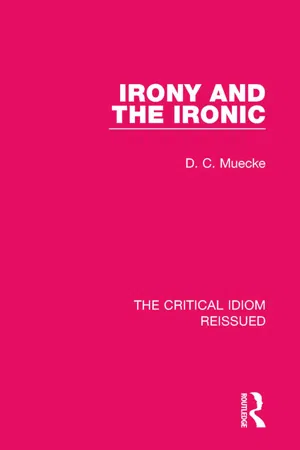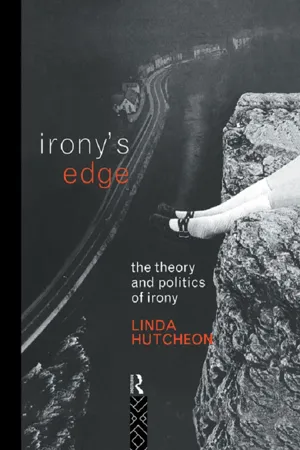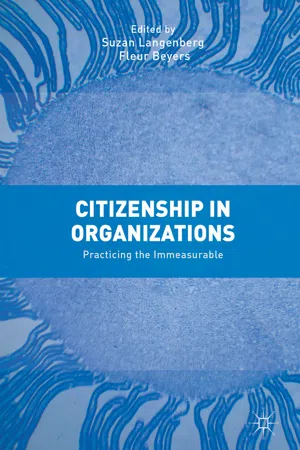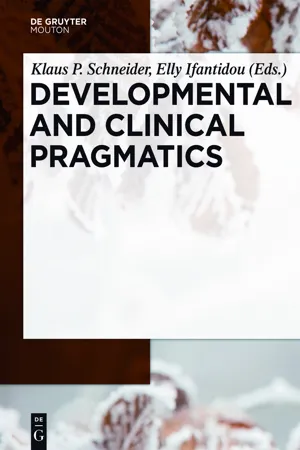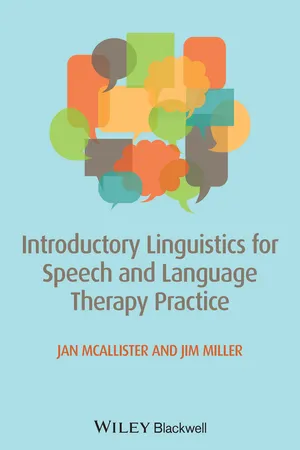Languages & Linguistics
Verbal Irony
Verbal irony is a literary device where the intended meaning of a statement is different from the literal meaning. It occurs when a speaker says something contradictory to what they actually mean, often for humorous or sarcastic effect. This form of irony relies on the audience's ability to recognize the disparity between the words spoken and the intended message.
Written by Perlego with AI-assistance
Related key terms
6 Key excerpts on "Verbal Irony"
- eBook - ePub
- D. C. Muecke(Author)
- 2017(Publication Date)
- Routledge(Publisher)
4The practice of ironyVerbal Irony
In this final chapter I shall look, selectively, at irony in action, and in this section at Instrumental Ironies in which language is the instrument. As we shall see, it is not always possible to distinguish Instrumental Irony from the presentation of Observable Irony, but in general the distinction is clear: in Instrumental Irony the ironist says something in order to have it rejected as false, mal à propos, one-sided, etc.; in presenting an Observable Irony the ironist presents something ironic – a situation, a sequence of events, a character, a belief, etc. – that exists or is to be thought of as existing independently of the presentation.A rhetorician dogged enough could probably identify as many ways of being ironical as there are ways of using words. I shall confine myself to the commoner varieties of Verbal Irony, in a great many of which the basic technique is either that of ‘going along with’ the ironic butt and placing him in high relief or that of depreciating oneself, which is the countersinking or intaglio method.The simplest form of ‘high-relief Verbal Irony is the antiphrastic praise for blame, for example the ‘Congratulations!’ we offer to the ‘smart Alec’ who has let the side down. This can be elaborated in a number of directions. Probably the best known instance of ironic agreement in English literature is in Chaucer’s presentation of the worldly monk: - eBook - ePub
Irony's Edge
The Theory and Politics of Irony
- Linda Hutcheon(Author)
- 2003(Publication Date)
- Routledge(Publisher)
And it happens in discourse, in usage, in the dynamic space of the interaction of text, context, and interpreter (and, sometimes, though not always, intending ironist). As a response to the extensive literature—in many different fields, from linguistics to psychology, from rhetoric to literary criticism—that sees irony as a straightforward semantic inversion (antiphrasis—or saying one thing and meaning its opposite) and thus as a static rhetorical tool to be used, this chapter expands on the suggestion made earlier in this book that irony is, instead, a communicative process. It is in this framework, then, that I would argue that ironic meaning possesses three major semantic characteristics: it is relational, inclusive and differential. Irony is a relational strategy in the sense that it operates not only between meanings (said, unsaid) but between people (ironists, interpreters, targets). Ironic meaning comes into being as the consequence of a relationship, a dynamic, performative bringing together of different meaning-makers, but also of different meanings, first, in order to create something new and, then, as Chapter 2 explored, to endow it with the critical edge of judgment. As noted, that Greek eiron, from whom irony got its name, was a dissembler, a pretender, and that notion of pretense figures frequently in “performative” theories of irony (Koestler 1964: 73–4; and especially Clark and Gerrig 1984: 121), humor (Douglas 1975), and figurative language, in general. In fact, it seems that children have to learn about pretense in order to understand irony (Winner 1988). The social dimension of this relational aspect of irony is the subject of the next chapter on discursive communities and their role in the enabling and comprehending of irony - eBook - ePub
- Theo Hermans(Author)
- 2014(Publication Date)
- Routledge(Publisher)
Insofar as the translator’s preface continues to resonate in the translated discourse, it reminds us of the divided, impure, multivocal nature of translations. More voices than one thus make themselves heard in a translation, even if the ideology – that is, the social and historical construction – of translation strives to neutralise or silence this multiplicity. The standard admonitions to the effect that translators should not speak in their own name, should disappear behind their authors, should not interfere, should render the original, the whole original and nothing but the original, all seek to preserve translation as undifferentiated, monologic speech. To achieve this they reduce translation to direct discourse pure and simple, to verbatim quotation, casting the translator merely as mouthpiece, animator, ventriloquist. In contrast to this view I suggest an image of translation as direct speech contaminated by indirect speech, an impure mix of direct and indirect discourse in which several simultaneous voices have a stake. The margin between frame and enactment contains the potential for dissonance as well as consonance.Echoic translation
Among the countless definitions of forms of irony that are in circulation, I have adopted the one offered by Relevance theory because it seems clear-cut, manageable and amenable to translation. In their book on Relevance , Dan Sperber and Deirdre Wilson describe irony as a second-order phenomenon, the interpretive representation of an existing representation. Irony plays when a speaker signals (a) that he is referring to an existing utterance or opinion, (b) that he has a certain attitude towards it, and (c) that this attitude is relevant (1986: 238-9). Irony is distinguished by the fact that the speaker distances himself from the opinion or words referred to. Appreciating irony requires that the hearer or reader recognise the reference and the speaker’s critical attitude. Let us take a closer look at the Relevance view of irony.In a series of essays and exchanges, Sperber and Wilson (1981, 1998; also Wilson and Sperber 1992) have characterised Verbal Irony as a form of ‘echoic utterance’. An echoic utterance is a subcategory of interpretive utterances. This latter term invokes a widely used distinction, that between interpretive and descriptive utterances. As already explained in Chapter One, the descriptive use of language means the deployment of language to make statements about the world. In contrast, language is used interpretively when it represents another utterance or thought which it resembles either in linguistic expression or in propositional content, as is the case with reported speech. Since an utterance is itself a representation (of a thought or a state of mind), an interpretive utterance offers a representation of a representation and is therefore a second-order or meta-representation (Noh 2000: 74; Sperber & Wilson 2004: 621). Translation, too, is metarepresentational to the extent that it is recognised as the interlingual representation of another utterance. - eBook - ePub
Citizenship in Organizations
Practicing the Immeasurable
- Suzan Langenberg, Fleur Beyers, Suzan Langenberg, Fleur Beyers(Authors)
- 2017(Publication Date)
- Palgrave Macmillan(Publisher)
Ironic, exactly where irony should not be indicated because the essence of it is that the reader has to think about it for a moment to know whether the writer means something or not, and because the ambiguity exactly constitutes an important characteristic of irony. It should be clear then, that I am aware of the fact that the textually capturing of a certain line of thinking around the theme of irony—as this chapter endeavors—is constantly a perilous, ambiguous venture. According to the definition of irony which is often used within literary theory, irony (Greek: eironeia) is a “figure of speech that is connected to the contrast between what is seemingly said, shown, or suggested and the true meaning of the utterance or situation” ([our translation] Van Gorp 1998 : 223). In doing so, irony often uses specific techniques such as an exaggeration (or hyperbole, e.g. when you say: “I have been waiting for you for centuries!”), a minimization (understatement or litotes: “I have already taken a little bite”, where you have already eaten half of the dish) or the inversion (antiphrasis: “well done, good job”, when you have completely ruined the situation). In the following, the technical side of these literary techniques shall not be discussed, but rather what in the abovementioned is referred to as the contrast between what is said, showed or suggested and what hides behind the said, showed or suggested. Hereby, we also resume the abovementioned discussion concerning the—arbitrary but contextual—relation between signifier and signified. The big force in this relation is doubt, says Kierkegaard; the doubt that the phenomenon you see, hear, read, is not the essence, but possibly even the opposite of that essence. That the phenomenon is not just the same as what is behind it, what is meant or possibly wants to stay hidden - eBook - ePub
- Klaus P. Schneider, Elly Ifantidou, Klaus P. Schneider, Elly Ifantidou(Authors)
- 2020(Publication Date)
- De Gruyter Mouton(Publisher)
Irony in Language and Thought: A Cognitive Science Reader, 57-95. Hillsdale, NJ: Lawrence Erlbaum.)Langdon, Robyn, Martin Davies and Max Coltheart 2002 Understanding minds and understanding communicated meanings in schizophrenia. Mind and Language 17: 68-104.Laval, Virginie and Alain Bert-Erboul 2005 French-speaking children’s understanding of sarcasm: The role of intonation and context. Journal of Speech, Language, and Hearing Research 48: 610-620.Leech, Geoffrey 1983 Principles of Pragmatics. London: LongmanLeggitt, John and Raymond Gibbs 2000 Emotional reactions to Verbal Irony. Discourse Processes 29: 1-24.MacKay, Gilbert and Adrienne Shaw 2004 A comparative study of figurative language in children with autistic spectrum disorders. Child Language, Teaching and Therapy 20: 13-32.McDonald, Skye 2000 Neuropsychological studies of sarcasm. Metaphor and Symbol 15: 85-98. (Reprinted in: Raymond Gibbs and Herbert Colston (eds.). 2007. Irony in Language and Thought: A Cognitive Science Reader, 217-230. Hillsdale, NJ: Lawrence Erlbaum.)Milosky, Linda and Janet Ford 1997 The role of prosody in children’s inferences of ironic intent. Discourse Processes 23: 47-61.Muecke, Douglas 1969 The Compass of Irony. London: Methuen.Nakassis, Constantine and Jesse Snedeker 2002 Beyond sarcasm: Intonation and context as relational cues in children’s recognition of irony. In: Barbora Skarabela, Sarah Fish and Anna H.-J. Do (eds.), Proceedings of the Twenty-Sixth Boston University Conference on Language Development - Jan McAllister, James E. Miller(Authors)
- 2013(Publication Date)
- Wiley-Blackwell(Publisher)
Isn't the meat a bit underdone? is not actually asking a question and means that the meat is not slightly underdone but very underdone. As with metaphors, the interpretation of ironic utterances calls for a considerable amount of mental processing. We can think of irony as the speaker pretending to say something positive while intending something negative and the hearer going along with the pretence.Language users also have to learn to distinguish irony from sarcasm . Ironic comments are not intended to hurt other people's feelings, but may simply be intended to start a conversation or to shake up someone who is feeling down, as when a speaker, coming in out of wind and sleet, comments Wonderful weather this morning! or Nothing like a bit of healthy sleet to set you up for the day! Sarcastic comments, in contrast, are intended to affect others negatively, as when a lecturer says to a student handing in a very short essay several days late I see you're really excited by this topic , or when a parent comments to a son wearing some garish outfit Couldn't you have bought something brighter?Jokes are utterances that are intended to make the recipients laugh or chuckle and are not to be taken seriously. They may take the form of extended stories, such as the one cited by Lynn Truss about the panda that eats shoots and leaves (see Chapter 7). They may simply consist of one-liners produced off the cuff. The daughter of a friend of the second author was talking about her success at a game of Scrabble, when she had scored 30 points with the word sex . Quick as a flash her father said Nobody's ever given me 30 points for sex – much laughter, followed by a comment from his wife. Jokes can enliven lectures, especially impromptu one-liners. Sadly, it is said that 30 years on a group of students will remember none of the content of a lecture series but will remember any good jokes.In many clinical resources, this aspect of language is targeted in items that refer to ‘literal ’ versus ‘indirect
Index pages curate the most relevant extracts from our library of academic textbooks. They’ve been created using an in-house natural language model (NLM), each adding context and meaning to key research topics.
